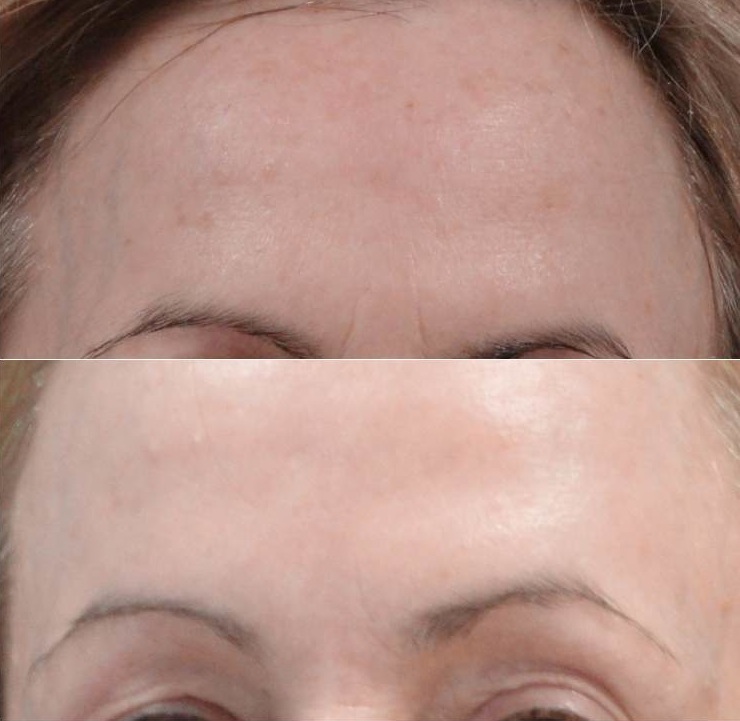Carbon Dioxide Laser

The carbon dioxide (CO2) laser is the post powerful laser method to improve the structure of the skin. The laser has been used to significantly improve the appearance of the skin and provide a youthful appearance:
- Remove wrinkles
- Tighten the skin (laser facelift)
- Removed unwanted skin growths such as keratosis, syringoma and skin tags
- Treat birthmarks
- Remove pigmented blemishes (dyschromia)
- Improve acne scarring
- Improve surgical scars
- Treat rhynophyma
How does it work?
The CO2 laser is a powerful beam of light, which heats water within the skin. This means that treated skin literally vapourises. The laser can be used to sculpt the skin into a contour and shape that suits the patient, helping to blend out scars, shaping the nasal contour and removing protruding skin growths.
What is fractionated CO2?
Fractionated CO2 lasers have a special method of firing the laser beam, so that tiny pulses of laser are applied to the skin. These pulses are laid in the shape of a grid, leaving untreated skin in between each pulse. The effect of leaving some untreated skin is that the patient heals much faster after a treatment. There are a variety of these lasers on the market eg Fraxel and CO2RE.
Is CO2 laser safe?
CO2 lasers are very powerful and you should only be treated by an expert. Dr Bashir has been using CO2 laser since 2007 and is an expert in both traditional and fractionated CO2 treatment. All of our patients have an initial consultation to assess their suitability, and most patients will have a test treatment before proceeding to a full main laser treatment. Patients will need to wear special eye protection which we shall provide, and local anaesthetic (cream or injections) are also provided to ease the pain.
What is the downtime from CO2 laser?
"Downtime" is a term used for the time that a patient will be recovering after a laser treatment. The downtime may range from a few days to a couple of weeks, depending on the treatment you are having and also your lifestyle. Examples of downtime are: patients taking some days of work so that their colleagues don't see them after treatment, or altering their social calendar to rest at home rather than be out. Many patients will work from home on their computers, and order an online grocery delivery to save the trouble of visiting the supermarket.
What are the potential side effects?
Side effects are minimal when you are treated in a expert practice. It is important that you have confidence in the clinic and that your treatment is from a highly experienced practitioner.
Immediate effects
Immediately after treatment, you will notice redness and swelling of the treatment area. This redness is particularly bright after lasering and gradually begins to fade. This skin can feel a little tender and raw, a little like after a minor burn or scald. You will be advised re after laser skin care such as washing and ointments.
Delayed effects
A few days after treatment, the skin may flake and shed, as dead skin is released from the surface, and new skin forms underneath to take its place. During this time, it's important to moisturise as directed by your consultant.
Your skin is prone to infection at this stage, so following the washing instructions and moisturising is very important. You may also have been given antibiotics and/or antiviral tablets to take. Please take these as directed by your dermatologist.
Unwanted effects
Unwanted side effects include infection, which is identified by pain, weeping of the skin and a yellow pus on the surface. Occasionally the skin can blister, the colour tone of the skin may alter - either lighter or darker and it is possible for the skin to scar. All of these will be discussed with you pre treatment and you may ask questions if you are at all uncertain.
After any laser treatment, we keep close contact with our patients, either physically, by telephone or electronically to provide the aftercare and support that they need.
Where can I have treatment performed?
We keep one of the most advanced laser suites in London, in our practice at the BMI Sloane Hospital in Beckenham. Consultations take place in Harley Street at The London Clinic, King's College Hospital Guthrie Clinic, or at BMI Sloane. Patients can book in directly or are often referred from other dermatologists or GPs. The Beckenham Laser Suite is easily accessible from Central London and Kent, and patients attend from around the South East.